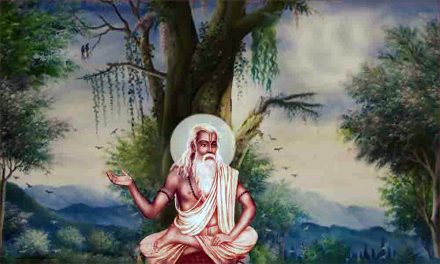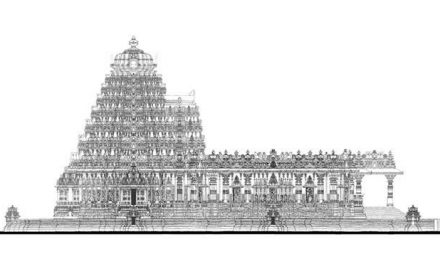Agnihotra is one of the five great duties (pancamahayajna) of every householder. Even in the student life, a brahmacari is expected to perform the same in his/her gurukula. It has been an integral part of the Indian tradition that every marriage ceremony includes agnihotra. So much so that the young man and woman, as the bridegroom and the bride, conduct the same as their very first act together soon after taking the vows to live together. It is also called by the names of devayajna, havana and homa. The last word homa is interesting that it sounds similar to the word home in the English language. Could it be that a house is worthy to be called home only if homa is conducted therein everyday!
Vedic seers invented the fire for the benefit of the mankind. While life without fire is unthinkable in the present times when almost all the technical gadgets perform with the help of the fire only – directly or indirectly. Of course, the sun is the primary source of energy for all the inhabitants on the earth, and the sun is nothing but a huge fireball in itself. The man-made transportation systems on land, air, sea, undersea and space function with the help of myriad of engines that utilize the thermal energy of one fuel or another through a fire in its combustion chamber.
Thermal power plants generate electricity through a fire only. And, most importantly, we eat so many kinds of dishes after cooking them on fire. Thus, the ability to generate fire at our will must have been the foremost invention of the Vedic seers long ago in the faculty of the material sciences. Indeed, the very first word of the Rigveda, the very first book in the library of the mankind is agni, meaning fire, in addition to many other things.
But the most remarkable thing for the Vedic seers to invent is the ritual of agnihotra. It demonstrates their understanding of the fire to the extent that they made it mandatory for everyone, twice a day. Prima facie, it sounds senseless to put the useful and valuable substances into the fire. This is what will be discussed briefly, and at the end we would be left with an appreciation for the great ingenuity of the ancient Vedic seers.
The Rsis in ancient India understood the mechanism of fire, its ability to break up the substances into vapor phase, and the related buoyancy and other aerodynamic effects that it can be used as a mechanism to cleanse the air both indoor and outdoor. They knew the principle of Conservation of Mass, what is stated in the modern terminology as “No mass is created or destroyed.” They knew that the oblations of different substances that are put into the fire may appear to vanish, but they don’t vanish in the truest sense. They merely become difficult to be seen by the naked eye because they have been transformed into vapor phase. It’s as simple as evaporation of water that becomes invisible but it continues to exist in the form of the water vapor. Indeed this is what causes rainmaking clouds.
Vedic seers made the ritual of agnihotra, a multi-dimensionally useful affair. It became a spiritually enlightening experience because the selected verses from the Vedas and other allied Vedic literature were recited during the course of agnihotra. It became a family/community affair strengthening the bond of love among one another because it is performed in a group. Of course, it cleanses the air both within the room and outside too. Thus, it is the most ancient science to fight air pollution even in those days when man was polluting the air and water to minimum extent, certainly several thousands times less that what he is doing today. Agnihotra can elevate us in all the domains of body, prana, mind, intellect, and the innermost spirit too. It encompasses all the meanings that are conveyed by the word yajna. The word is derived from the root yaj that stands for devapuja sangatikarana danesu. That is, Yajna is a karma that should be 1) in due honor of devas, both sentient and insentient, 2) an assembly of noble souls, and 3) in the nature of sacrifice.
Agnihotra can truly be characterized as a Yajna because first, it is for cleansing of air, a devata of insentient nature. Furthermore, it enhances the characteristics of the herbal substances (that are also devatas in nature) multifold, as we will see later. Two, it is a group activity when a number of people assemble together with a positive frame of mind and intellect. Three, it amounts to making a sacrifice from a personal point of view though the benefits of the same would be obtained by all beings in general. The oblations of many valuable substances are offered into the fire, which amounts to sacrifice. The Verses are chanted with the endings of “idam na mama”, i.e. this is not mine. This reinforces in mind that all the material possessions of ours in the world are actually not quite proprietary in nature; it is merely for the purposes of transfer and diffusion to others in keeping into the spirit that all the wealth is actually that of the creator – He is the true Creator and Owner. What follows is a brief description of agnihotra from the combustion sciences point of view. It is assumed that the readers are familiar with the ritual of agnihotra as such.
Understanding the Essentials of Combustion
Combustion is said to occur if a fuel is oxidized (generally by the atmospheric oxygen) giving rise to thermal energy. Typically, mere presence of the fuel and oxygen does not lead to combustion. For example, there is fuel and oxygen present in the automotive fuel tank but no combustion takes place therein. It must be initiated by a source of ignition – what a spark plug does in a gasoline engine or a lighted matchstick may do in the fuel tank.
Once the combustion takes place, thermal heat is produced that was inherent in the particular fuel. This gives rise to increase in temperature. Some fuels release much more energy than some other fuels. For example, typical hydrocarbons fuels such as methane, propane, gasoline, diesel, etc. have their thermal energy in the range of 10,000 calories per gram of fuel, called Calorific Value of the fuel. Upon combustion (that is, oxidation by atmospheric oxygen) the final temperatures may be as high as 2500 degree Celsius, called the adiabatic flame temperature of the particular fuel. There are fuels that have smaller calorific values such as cellulose materials, wood being one of them. Typical firewood may have calorific value around 3000 calories per gram of fuel – about one-third of the hydrocarbon fuel. This is easy to understand because hydrocarbon fuels have only carbon and hydrogen atoms in their molecular structure while cellulose materials have oxygen atoms too in addition to the carbon and hydrogen atoms. That means that the molecular structure of cellulose materials has embedded oxygen atoms. In other words, they are partly oxidized within their molecular structure and upon combustion they can be further oxidized by the atmospheric oxygen to the remaining lesser extent only. Hence their calorific value is much lower. Upon combustion, they are likely to cause maximum temperatures in the range of 800 – 1200 degree Celsius only.
Upon complete combustion, we expect formation of carbon dioxide and water vapor as the products. Due to the deficiency in the availability of oxygen, or other possible reasons some fuel remains unburned, or gets only partially oxidized to carbon monoxide. Unburned fuel and carbon monoxide are considered undesirable pollutants for the atmosphere. Also, if the combustion gives rise to high temperatures in the range of 2000 degree Celsius or above then the atmospheric nitrogen and oxygen may react with each other, forming the oxides of nitrogen – another family of undesirable pollutants. Thus, we can see that while combustion of a fuel gives rise to thermal energy, it produces some undesirable pollutants such as unburned fuel, carbon monoxide and the oxides of nitrogen. Nowadays, when man is using energy in greatly unchecked manner even carbon dioxide is considered as undesirable because of it being one of the so-called greenhouse gases.
Combustion in Agnihotra
Agnihotra consists of a base fire generated in a specially designed vessel built/fixed on the surface of the level ground. Burning firewood of certain specified characteristics forms the base fire. Firewood being a cellulose material has much lower calorific value. The base fire has much lower temperatures than in the typical engines. To this base fire, certain substances are added periodically in the form of oblations. Purified butter (ghrtam) and several herbal substances are added into the base fire. Maharsi Dayananda Sarasvati (1824-’83) has stated in Satyartha-Prakasa that the herbal substances to be added into agnihotra should be 1) wholesome, i.e. health givers, 2) anti-bacterial, 3) aroma-builders, i.e. deodorants, and 4) sweeteners.
It should be emphasized that the purpose of agnihotra is not to burn the substances that are added in the form of oblations, rather it is to vaporize them, i.e. to heat them just to the extent that they are transformed into vapor phase. Thereby they diffuse into the surrounding air and transform the air quality. Coupled with the buoyancy and aerodynamic effects due to the thermal energy released by the base fire, the vaporized substances traverse to all nooks and corners of the enclosed room. In other words, the base fire is utilized to convert the herbal substances into gaseous phase, and furthermore, to aerodynamically transport the same to the entire surroundings in a most effective manner. The buoyancy forces enhance the transport processes.
It must happen that a fraction of the substances added as oblations do go through combustion process, especially so must be true with ghrtam. Their effects upon combustion is not expected to be harmful to the atmosphere because they are carefully chosen to bear one or more of the above four characteristics. Details of the related chemistry have been sufficiently dealt with by Satya Prakash in “Chemistry of Agnihotra” published by Jan Gyan Prakashan, New Delhi, and by Ram Prakash in “Yajna Vijnana Vimarsh” published by Aneeta Arsha Prakashan, Panipat, India – both the authors were chemists.
Overall result of the agnihotra is that the desirable substances can be inhaled through the nostrils by one and all. This mechanism of intake as opposed to the direct means through the mouth (in the liquid and solid phase) is more efficient by a factor of several hundreds. Also, it seems to be the only way to cleanse the indoor air. As opposed to a typical air freshener, which simply attempts to neutralize the stale air, agnihotra drives the indoor air out thereby causing outdoor fresh air to move in. In addition to this, it effectively neutralizes the stale indoor air as explained by the characteristics of the herbal substances utilized.
Let us now discuss the production of pollutants by the base fire, if any. As we have said, the base fire is generated by burning firewood, which has lower calorific value than the typical hydrocarbon fuels. This ensures lower temperatures when oxides of nitrogen cannot be formed. The design of the vessel ensures plenty of oxygen and the amount of firewood burned is to the minimum extent so that carbon monoxide is minimal, as well as the unburned hydrocarbons. Carbon dioxide, a greenhouse gas is definitely formed, and therefore, it is suggested that the agnihotra ought to be performed during and after sunrise, and well before sunset in an area with sufficient green cover. Such local surroundings ensure that the carbon dioxide is well utilized by the green cover in the vicinity to give rise to oxygen and greenery. In the presence of sunlight the vegetation converts the carbon dioxide into oxygen.
In the modern times, our life style gives rise to formation of carbon dioxide in very large proportions. In the olden days, carbon dioxide was not an undesirable combustion product. Though its control is required now, by any means agnihotra should not be criticized for the same. We should concentrate on other sources of carbon dioxide because agnihotra has many advantages in the context of air pollution. We are not aware of any other method to purify the air once that has been polluted by us. This requirement is of enormous proportion for the indoor air because that is what we breathe in most of the time. This is becoming increasingly important because the modern man is increasingly spending more time indoor, and his life style is doing more and more harm to the environment. In the given circumstances, agnihotra has become much more desirable. The air fresheners that are commercially available cannot purify the indoor air. Their purpose can be very limited to reduce the undesirable foul odor, and even for that purpose their side effects have to be fully understood.
The ancient Rsis had truly understood that Agni is a devata of insentient type because of its ability to return the substances to us in a form that magnifies the positive effects thereof by many hundred times. According to Yaska, a devata or a deva is one who gives us useful things, light or knowledge. In that sense agnihotra is a ritual to perform devapuja, and hence it is called devayajna too.














I was performing Agnihotria before I will resume it again the ashes left behind when mixed with the soil of your garden increases the yield